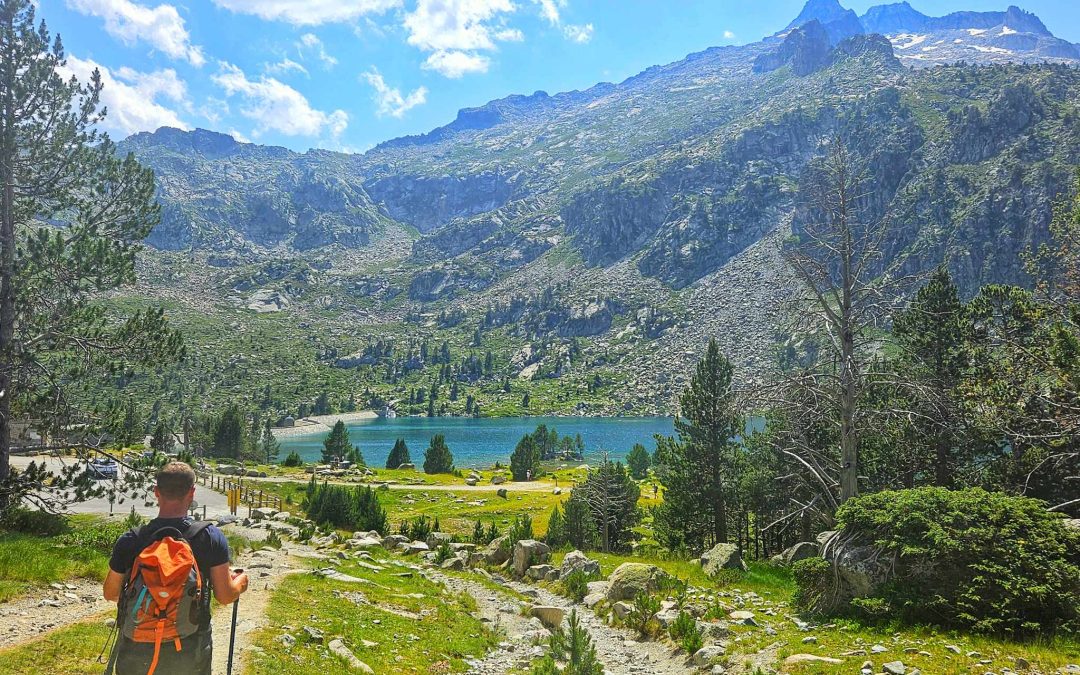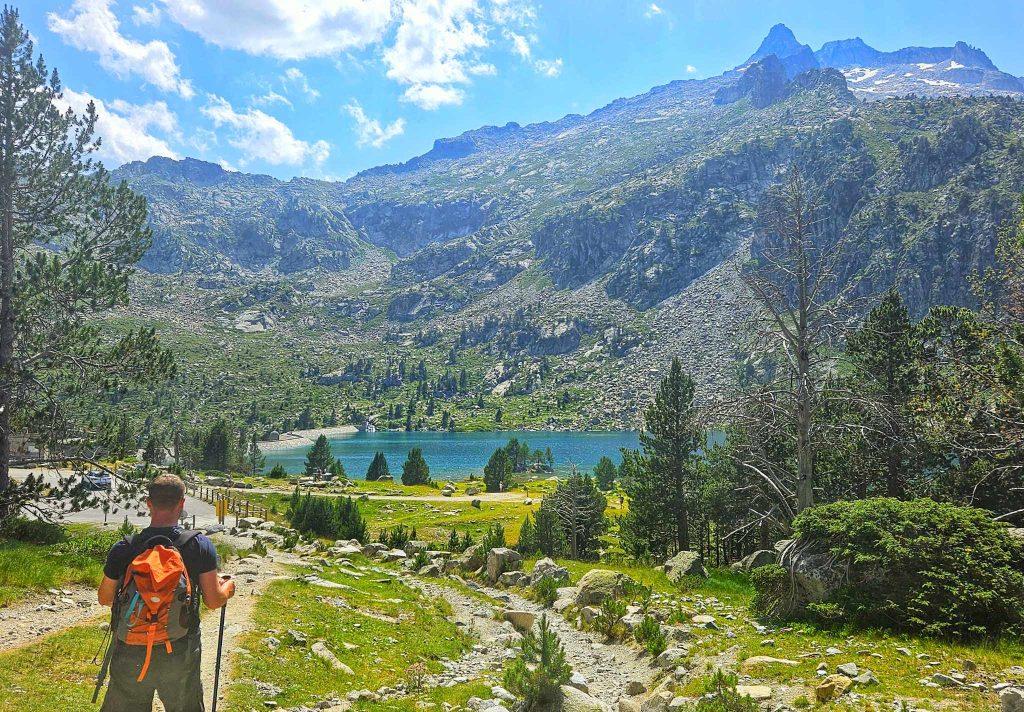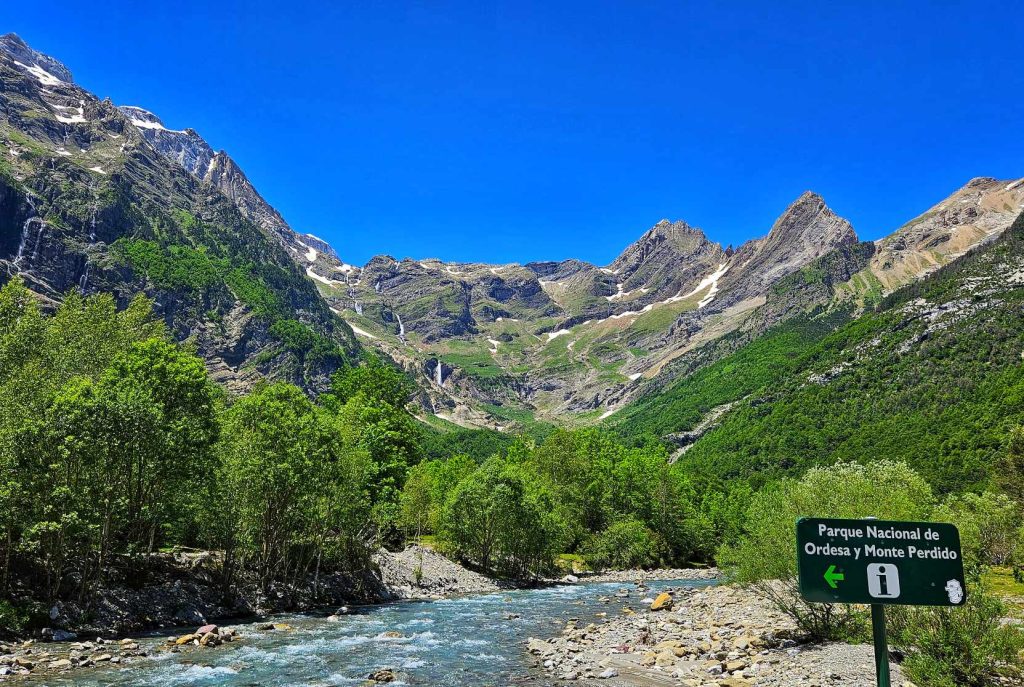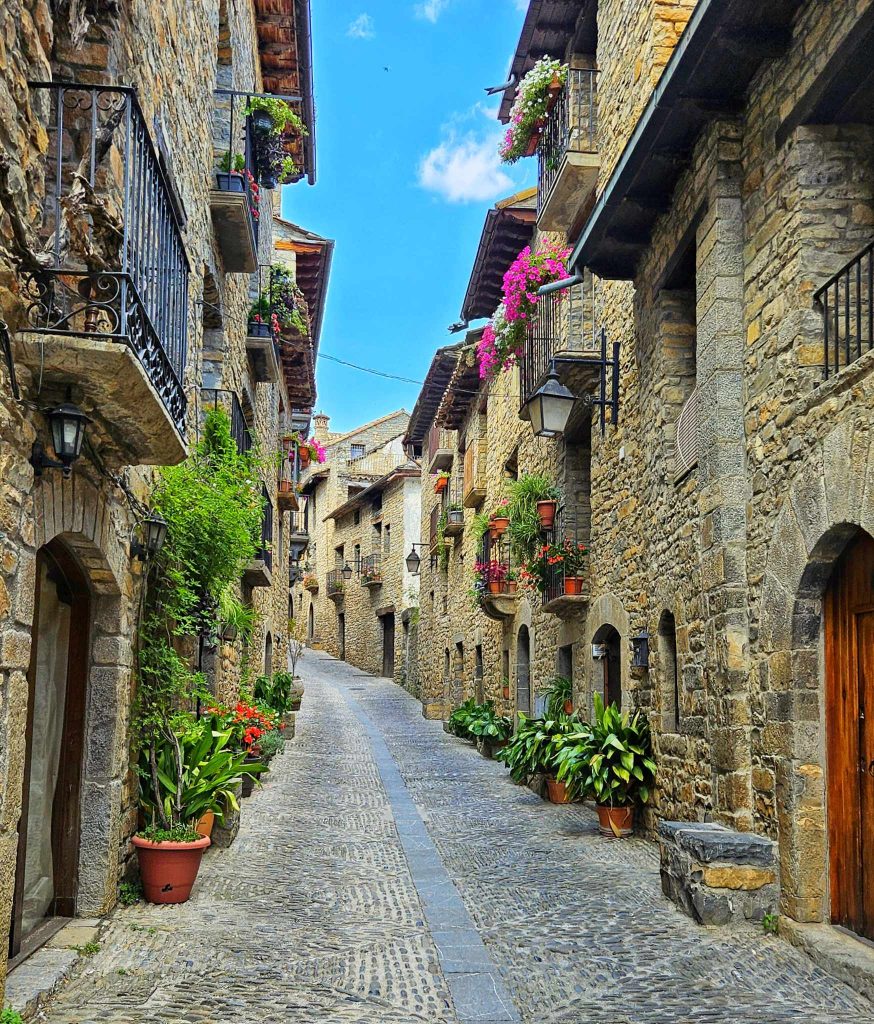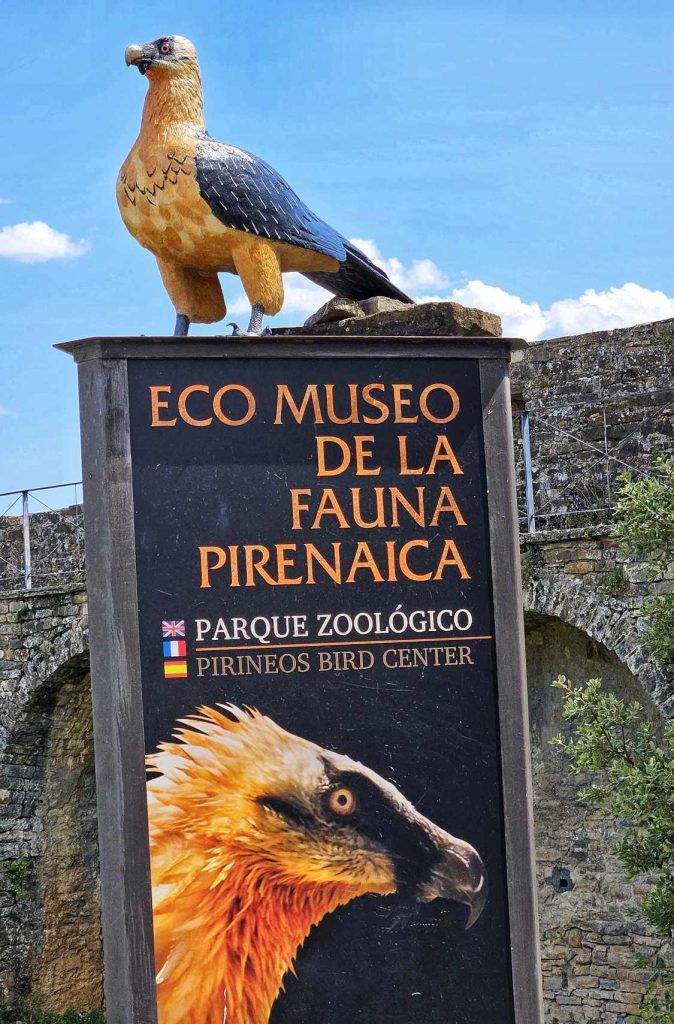This is the fourth summer that we have spent exploring the Pyrenees; each year returning to explore a new mountain area or valley, and each year we discover a more strenuous hike, a more spectacular lake or a more magical forest.
When you look at a map of the Pyrenees you see a large mountain range that forms a natural barrier between France and Spain and within which the tiny country of Andorra nestles. A closer look reveals a complicated structure. Natural and national parks abound and long distance footpaths and trails criss-cross the whole region connecting towns, villages and valleys.
The topography dictates that many beautiful valleys are in a sense dead-ends and so to explore an area you either need to do long cross hikes or launch in from different entry points; and as these entry points are usually a drive of several hours apart this has formed our method of exploring. Each year my partner and I establish a ‘base camp’ and we explore upwards and outwards from that point.
The first year of camping we began on the western side of Mont Perdido (the Lost Mountain) staying near the cute mountain town of Torla. The next year we focused on the Boí valley staying at Taȕll where with perfect timing we witnessed an impressive ‘fallas’ procession celebrating San Juan.
During 2023 we spent many weekends discovering the area around Espot splitting our time between two different campsites and this summer, the fourth year, we have begun to explore the eastern side of Mont Perdido together with the Pineta and the Chistau valleys and even crossing over into France, basing ourselves near the small village of Bielsa.
We tend to favour the smaller campsites and preferably sites with no swimming pools (because pools = children = noise) and once we have discovered our ideal place we tend to return many times throughout the season. We have our tent pitching down to a fine art and we can have our camp all set up within an hour of our arrival. Whilst it is always tempting to eat out in some of the local restaurants we usually cook our dinner on site where we can both have a beer or share a bottle of wine and neither of us needs to worry about driving home.
For us, a campsite can be simple but it must be clean. Occasionally things may get lively as larger groups of friends or families chat into the night over a long slow supper, but generally people on the smaller sites are respectful of the privacy and tranquillity of others. I am hesitant to advertise the names of our favourite sites as I would hate for them to become so popular that we would be unable to find a spare pitch when we want to stay, but equally they do deserve to be named – and I will do so as I write about some of these places.
Every valley, every village and every road is different in the Pyrenees and the majority of them have a backdrop of soaring mountain peaks, waterfalls, lakes or forests. Refugios (refuges) are dotted around on the high plains offering safe haven to trekkers and skiers and there are even bears, wolves and lynx up there. As even a grazing herd of the (apparently) gentle herds of cows can reduce me to a quivering mess when I have to hike near or through them, I only hope that my path never ever crosses that of a bear or a wolf.
We have spent hours watching the incredibly cute marmots, we have seen stags rutting and eagles swooping and soaring and one afternoon we also spent a ridiculous amount of time captivated by a tiny dormouse eating a dandelion just one metre away from us.
Cheese, wine and sausages all taste of the mountains with a depth of flavour to match the scenery and my hope is that I have whetted your appetite to read more and learn more about this region with me.
The summer fire festivals
I mentioned experiencing the fallas in Taȕll, These festivals have been declared by UNESCO to be of cultural importance. They take place in many of the villages of the Pyrenees around the time of the midsummer solstice. On phoning to confirm our camping pitch we were advised to arrive at the site early as the access roads would be closed off by the police. We nearly didn’t make it in time because my partner had trouble leaving work early but we got there by the skin of our teeth and as we were erecting our tent the police arrived in the village to marshall the traffic and to coordinate the evening’s events.
We weren’t sure what to expect as we hadn’t gone specifically to see the fallas, but as the evening went on more and more people gathered in the village square. Numerous local people were carrying large, heavy bundles of wood and sticks over their shoulders that were bound together to make giant torches. Eventually all of the torch bearers left the plaza to hike to the top of the nearby mountain peak whilst we were entertained in the centre of the village by a band of musicians on the stage.
Then followed a delay whilst the fire brigade had to climb up the same mountain path to put out a fire which had been accidentally started (wildfires are a growing threat as the climate in Spain gets ever hotter), but close to midnight an orange glow lit up the mountain top as the wooden torches were lit and a huge cheer went up from the crowd.
This was the first time that the fallas had been permitted since the lockdown and Covid so it was an emotional time for the locals who had been missing this important part of their cultural diary.
We then watched from the crowded village plaza as the glow turned into a huge serpent of fire as the hundreds of people carrying their torches wound their way down the mountain pass and then, as they reached the plaza, it exploded into a crescendo. The torch bearers charged through the village at top speed, crossing through narrow paths formed by hundreds of people like us who had come to watch. Sparks were flying and the heat from the torches was incredible. It was exciting and a little bit dangerous for us – but it must have been even more exhilarating for the torch bearers themselves. Eventually, as the torches began to burn low they were added onto an enormous bonfire and the party continued into the early hours of the morning and we made our way back to our campsite and bed.
Click here to read about the Correfoc which is another celebration with fire in Catalunya.
Ainsa
The medieval town of Ainsa guards some of the access roads that lead to the National Park of Ordesa and Mont Perdido. It takes nearly an hour to get from Ainsa to Torla due to the road which winds tortuously up through the mountains but just thirty minutes to drive to Bielsa.
Ainsa also marks the end point of a huge embalsa (reservoir). Depending on the time of year and the drought situation in Spain the water levels in this reservoir may be quite low or you may see the forest of trees half submerged, but it is always the most brilliant blue colour.
Ainsa truly is a gem of a little town with is so much to see and do all around it. It has a large castle, a great plaza packed with restaurants and coffee shops and of course, the usual jumble of narrow streets that wind up and down within the town walls.
The castle is host to an impressive array of concerts and performances during the summer and there is also a cool little museum which is well worth taking the time to explore.
The Eco Museum houses information about the flora and fauna of the region with many displays but it also houses live birds of prey which for whatever reason (injury usually) cannot be released back into the wild. I had heard about the majestic Quebrantahueso or Bearded Vulture. Apart from it’s enormous size, this bird is quite unique because it feeds almost exclusively upon animal bones rather than meat. Even large or old tough bones are easily tackled by this bird because it can carry bones weighing more than 4 grams in weight to a height of 150 meters where it will drop them onto the rocks below, causing them to crack! These really are majestic birds and you get a real sense of scale when you see them close up in this eco museum.
There is a bird of prey ‘hide’ on the road below San Juan de Plan in the Chistau valley and we spent a long time here just the other week watching these awesome birds (together with eagles and kites) soaring on the thermals and swooping down to a feeding platform which has been set up for them.
I hope that you have enjoyed this introduction to the Spanish Pyrenees and maybe I have encouraged you to get out and to explore for yourself. Make sure that you come back for more articles where I will delve deeper into the things that you can see and do in this beautiful area and I will give you details of some of the hidden gems of campsites that we have discovered.
If you have any questions or comments you can find me over on Instagram and Facebook and of course, you could also buy me a coffee (at Spanish prices) if you have enjoyed this article.
Buy me a Coffee
https://www.instagram.com/scarletjones30
